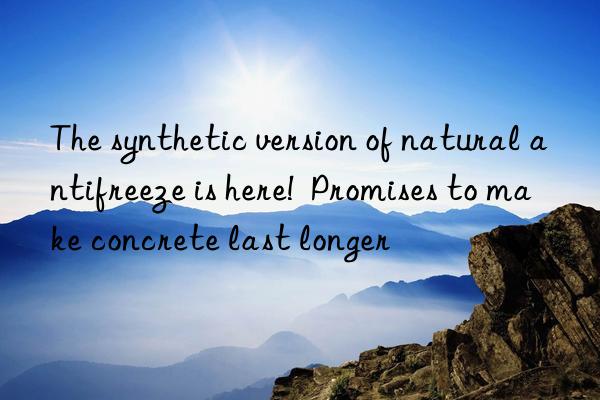
According to foreign media New Atlas, people living in cold areas may already know that winter is not friendly to concrete. That may be changing, though, thanks to a polymer additive that mimics natural antifreeze. Problems with concrete and temperature fluctuations arise when snow melts into liquid water, seeps into porous concrete, and then freezes again as temperatures drop. When this water freezes into ice crystals, it expands, putting pressure on the concrete from the inside. Over the course of multiple freeze-thaw cycles, this will cause large chunks of concrete to pop out of the surface of the material.
One way to solve this problem is to introduce tiny air bubbles during mixing to make the concrete more porous. Once the material hardens, these bubbles give space for ice crystals to form, reducing pressure. But unfortunately, such concrete is not as strong as ordinary materials. Additionally, its increased porosity allows more potentially harmful water to enter along with corrosive elements like road salt. Instead, scientists at the University of Colorado Boulder turned to natural antifreeze produced by plants and animals living in the Arctic and Antarctic regions. Led by associate professor Wil Srubar III, the team set out to replicate the effects of these compounds by combining two existing polymers, polyvinyl alcohol and polyethylene glycol.
When these polymer linking molecules were added to conventional concrete, they reduced the size of ice crystals that formed within the material by 90 percent. It was found that even after 300 freeze-thaw cycles, the treated concrete resisted ice damage well and was also stronger, more impermeable and longer-lasting than concrete containing air bubbles. It is now hoped that a commercial version of this additive will be available within five to 10 years. During this period, scientists will further explore its practicality and economic feasibility in the real world.

 微信扫一扫打赏
微信扫一扫打赏

